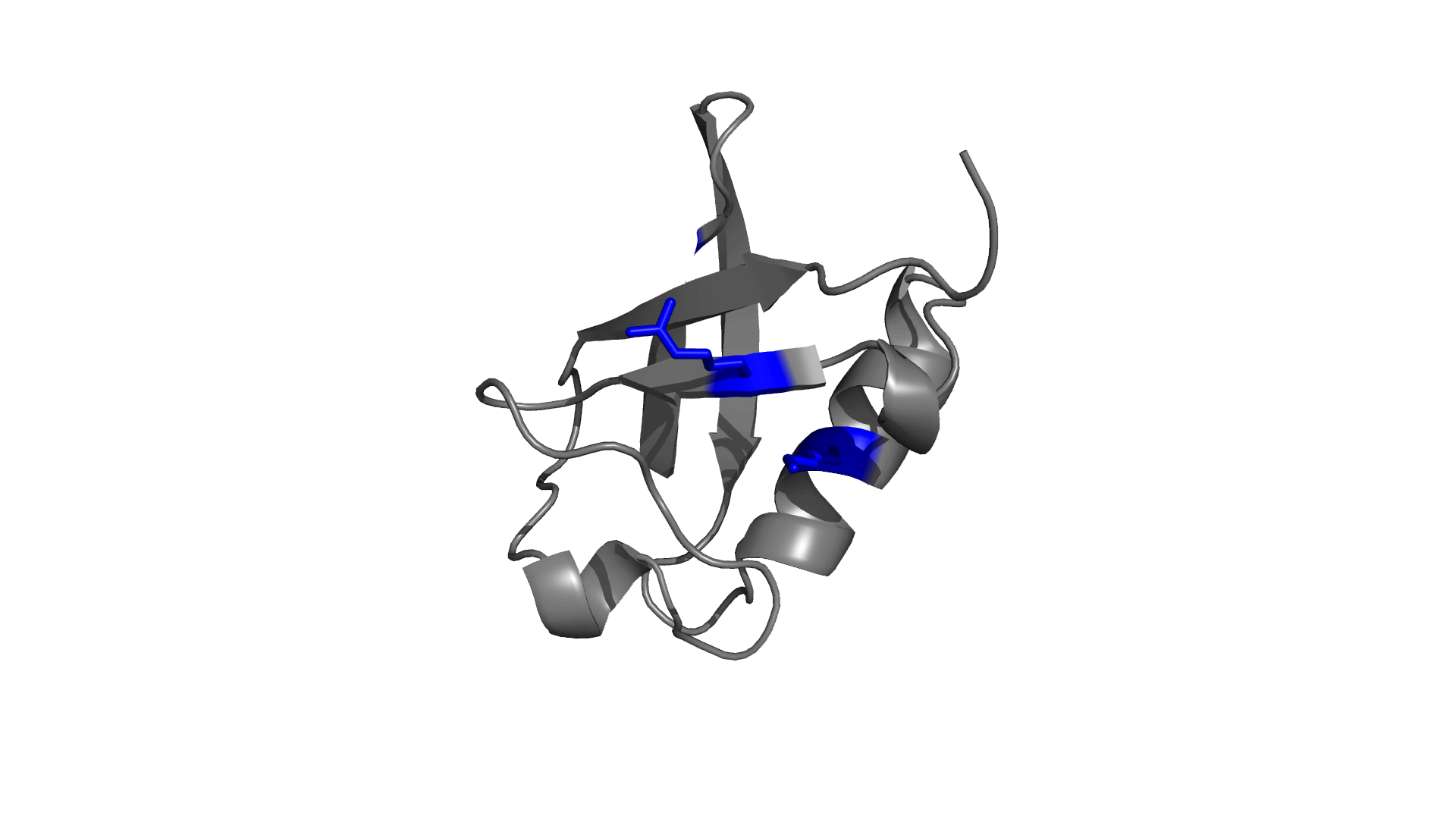
pStab
Prediction of Stable Mutants, Unfolding Curves, Stability Maps and Protein Electrostatic Frustration
pStab Overview
pStab web server provides a robust and fast strategy to engineer protein stabilities through mutations involving charged residues. Mutants are generated by iteratively shuffling the charges around in the native structure whilst the stabilizing and de-stabilizing mutations are identified from their Debye-Hückel interaction energies. A structure-based statistical mechanical model (the Wako-Saitô-Muñoz-Eaton model) is then employed to predict the unfolding curves (and hence the changes in stabilities) for selected mutants as a function of temperature. We expect the method to be of importance as a first and rapid step to screen for protein mutants with specific stability in the biotechnology industry, in the construction of stability maps at the residue level (i.e., hot spots), and as a robust tool to probe for mutations that enhance the stability of protein-based drugs. At a more fundamental level, pStab provides a simple avenue to explore the role of electrostatic frustration in proteins.
Citing pStab
1. Gopi, S., Devanshu, D., Krishna, P., & Naganathan, A. N. pStab: Prediction of Stable Mutants, Unfolding Curves, Stability Maps and Protein Electrostatic Frustration. Bioinformatics., 2018, 34, 875-877. ![]()
2. Naganathan, A. N. A Rapid, Ensemble and Free Energy Based Method for Engineering Protein Stabilities. J. Phys. Chem. B, 2013, 117, 4956−4964. ![]()
Also, please cite the literature source associated with the modules you have used.
- JSmol: Hanson, R.M., Prilusky, J., Renjian, Z., Nakane, T., and Sussman, J.L.: JSmol and the next-generation web-based representation of 3D molecular structure as applied to Proteopedia. Isr. J. Chem., 2013, 53, 207-216.
- PyMOL: The PyMOL Molecular Graphics System, Version 1.6 Schrödinger, LLC.
- STRIDE: Heinig, M., & Frishman, D. STRIDE: a Web server for secondary structure assignment from known atomic coordinates of proteins. Nucl. Acids Res., 2004, 32, W500-2.
- WHAT IF: Rodriguez, R., Chinea, G., Lopez, N., Pons, T., & Vriend, G. Homology modeling, model and software evaluation: three related resources. CABIOS, 1998, 14, 523-528.
99 PDB files were analyzed using this web-server, since September 13, 2017.
Send your comments and questions to pstab@wmail.iitm.ac.in
This site works best in Firefox v 12.0 and later, Safari v 5.1.7 and later, Chrome v 20.0 and later.
Protein Biophysics Lab


2017, Maintained by Protein Biophysics Lab, IIT Madras, Chennai-36, India
Last Updated: September 13, 2017